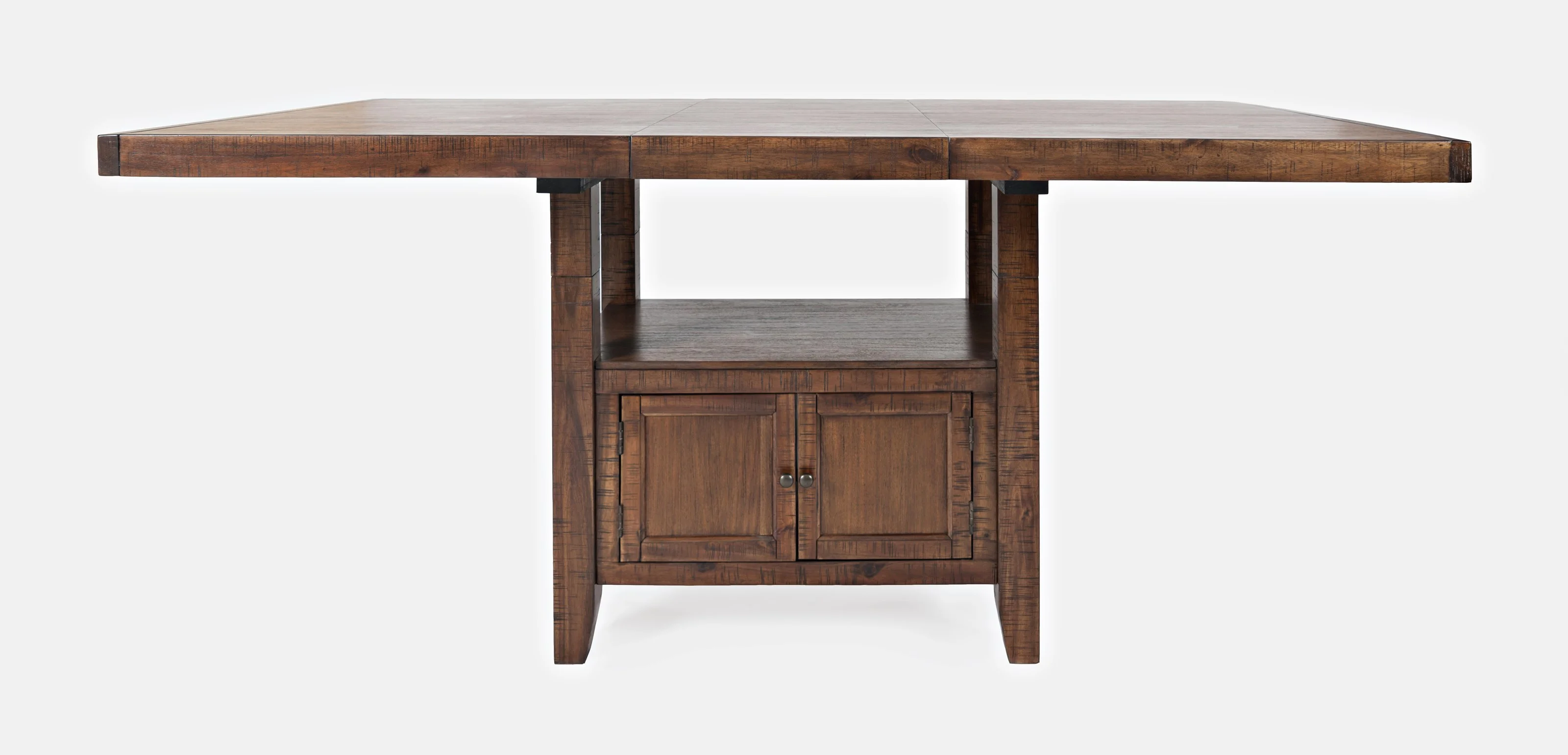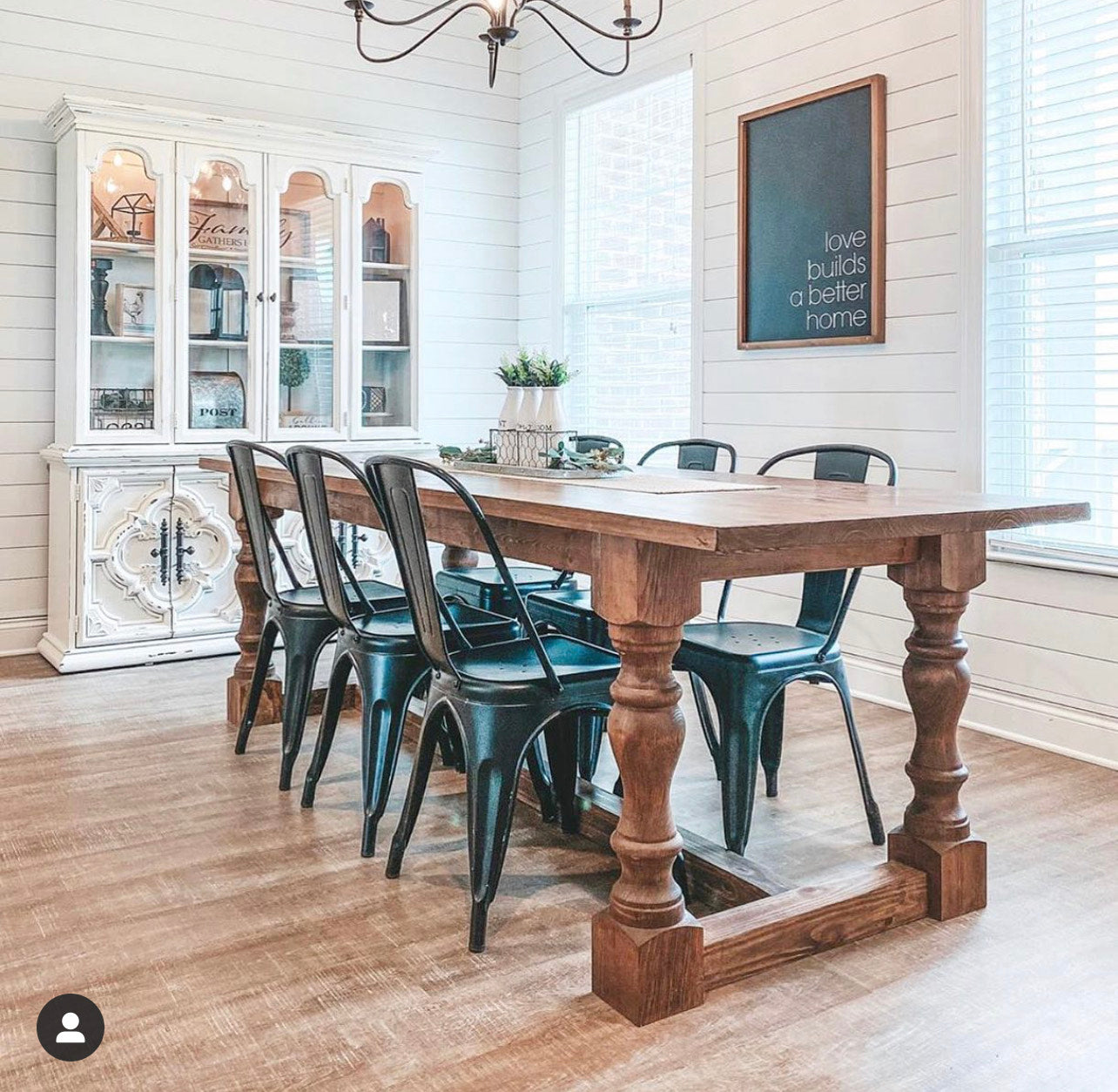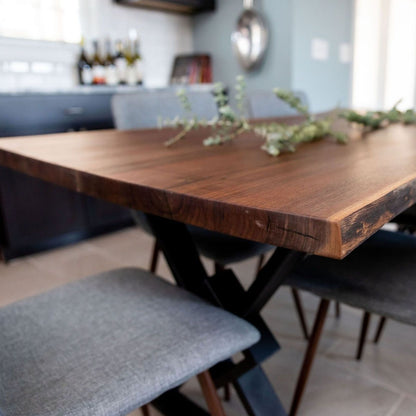How to Pick the Perfect Dining-room Table Legs for Your Home Decoration
Choosing the perfect eating room table legs is a nuanced process that needs careful factor to consider of various aspects, including your area restrictions, aesthetic preferences, and functional demands. The interaction between styles, dimensions, and products can substantially affect the ambiance of your eating area, making it crucial to approach this choice systematically.
Assess Your Dining Space
Assessing your eating area is essential for selecting the right table legs that enhance both aesthetic appeals and capability. Begin by gauging the measurements of your dining area, consisting of ceiling elevation, flooring room, and distance to other furnishings. This information will assist determine the appropriate dimension and elevation of your eating table, which directly affects the choice of table legs.
Following, think about the style and design of your eating space. For instance, an open-concept style may benefit from table legs that provide aesthetic lightness, such as slim metal or acrylic options. Alternatively, a more traditional setting may call for tough wooden legs that provide a sense of durability.
Review the existing shade scheme and products in your eating location. Integrating the table legs with these elements creates a cohesive appearance that enhances the overall decor. Furthermore, consider the performance required in your area. For instance, if you regularly hold large gatherings, take into consideration legs that offer added support and stability.
Ultimately, a complete analysis of your eating space will certainly direct you in making a notified decision, ensuring that your table legs not only enhance the visual appeal however likewise offer sensible purposes.
Consider Your Design Preferences
When selecting dining-room table legs, it is necessary to review your personal design preferences, as they dramatically affect the overall visual of your dining space. Your selection of table legs can either enhance or comparison with existing decor, making it crucial to align them with your recommended interior decoration motif.
If your home leans towards a contemporary aesthetic, consider sleek metal or minimal wood legs that supply a tidy, uncluttered appearance. For a much more standard method, elaborate wooden legs with complex carvings can add a touch of sophistication and refinement. Industrial styles profit from durable, raw products such as redeemed timber and steel mixes, mirroring a tough appeal.
In addition, farmhouse and rustic styles commonly favor strong, beefy legs that stimulate a sense of heat and comfort. Conversely, if your decor is diverse, you may select unconventional forms or a mix of materials to create aesthetic rate of interest.

Evaluate Material Options
The option of material for eating space table legs plays a crucial function in both toughness and aesthetic allure. Typical materials include timber, steel, and composite alternatives, each offering unique features that can affect the general look and long life of your table.
Wood is a timeless selection, known for its warmth and convenience. Hardwoods like oak and walnut offer phenomenal stamina and can be completed in different spots to match any decor. Softwoods like pine are extra prone to damages and scratches, making them less perfect for high-traffic locations.
Steel legs, frequently crafted from steel or aluminum, show modernity and industrial beauty. They are extremely long lasting and immune to wear, making them suitable for family members with kids or regular events (dining room table this content legs). Furthermore, metal can be ended up in numerous shades, enhancing the modification opportunities
Composite products, such as MDF or laminate, offer cost and varied layouts. While usually much less sturdy than strong wood or metal, they can still provide a trendy look and are frequently very easy to maintain.
Inevitably, the material you select ought to align with your way of life, visual choices, and the level of usage your table will experience.
Determine Elevation and Dimension
Choosing the appropriate height and dimension for your dining-room table is vital for both functionality and comfort. The conventional elevation for dining tables normally varies from 28 to 30 inches, permitting enough legroom for the majority of individuals when seated. Nevertheless, it is essential to take into consideration the dimensions of your dining space and the sorts of chairs you intend to use.

Furthermore, consider the proportions of your dining-room. A larger table in a sizable location can develop a grand atmosphere, while a smaller table works well in more intimate setups. Ultimately, the appropriate elevation and dimension will certainly harmonize with your total decoration and enhance the eating experience for you and your visitors.
Explore Customization Possibilities

In addition, the layout of the legs can be customized to fit various styles, such as rustic, modern-day, or commercial. Conical legs can evoke a mid-century modern feeling, while beefy, block-style legs might resonate with conventional or farmhouse decor.
Property owners can additionally discover color coatings, from all-natural timber stains to repaint, allowing them to match or contrast with the table top and surrounding decor.
In addition, leg height can be changed to suit particular seating arrangements or individual preferences, enhancing both comfort and performance.
Lastly, one-of-a-kind embellishments, such as visit here makings or decorative brackets, can additionally individualize the table legs, making the dining experience not simply a declaration but a dish item in the home. By taking into consideration these personalization alternatives, homeowners can produce a dining-room table that absolutely shows their individuality.
Conclusion
Selecting the perfect dining area table legs requires cautious factor to consider of various elements, consisting of the dimensions of the eating room, design choices, product sturdiness, and desired height. Customization options further improve the capacity to accomplish a natural visual that matches the total decor. By methodically examining these elements, property owners can ensure that the selected table legs not just accomplish useful demands but likewise contribute favorably to the dining experience and atmosphere of the home.
Selecting the excellent eating area table legs is a nuanced procedure that calls for cautious factor to consider of various elements, including your area restraints, visual choices, and sensible demands.Examining your eating space is critical for selecting the right table legs that match both aesthetics and performance.When determining dimension, measure the area where the table will certainly be placed to guarantee it fits comfortably, enabling for at least 36 inches of clearance around the table for very easy movement. A bigger table in a spacious area can produce a grand atmosphere, while a smaller table works well in even more intimate settings.Picking the optimal eating space table legs requires mindful consideration of various variables, including the measurements of the eating space, style choices, material toughness, and wanted height.